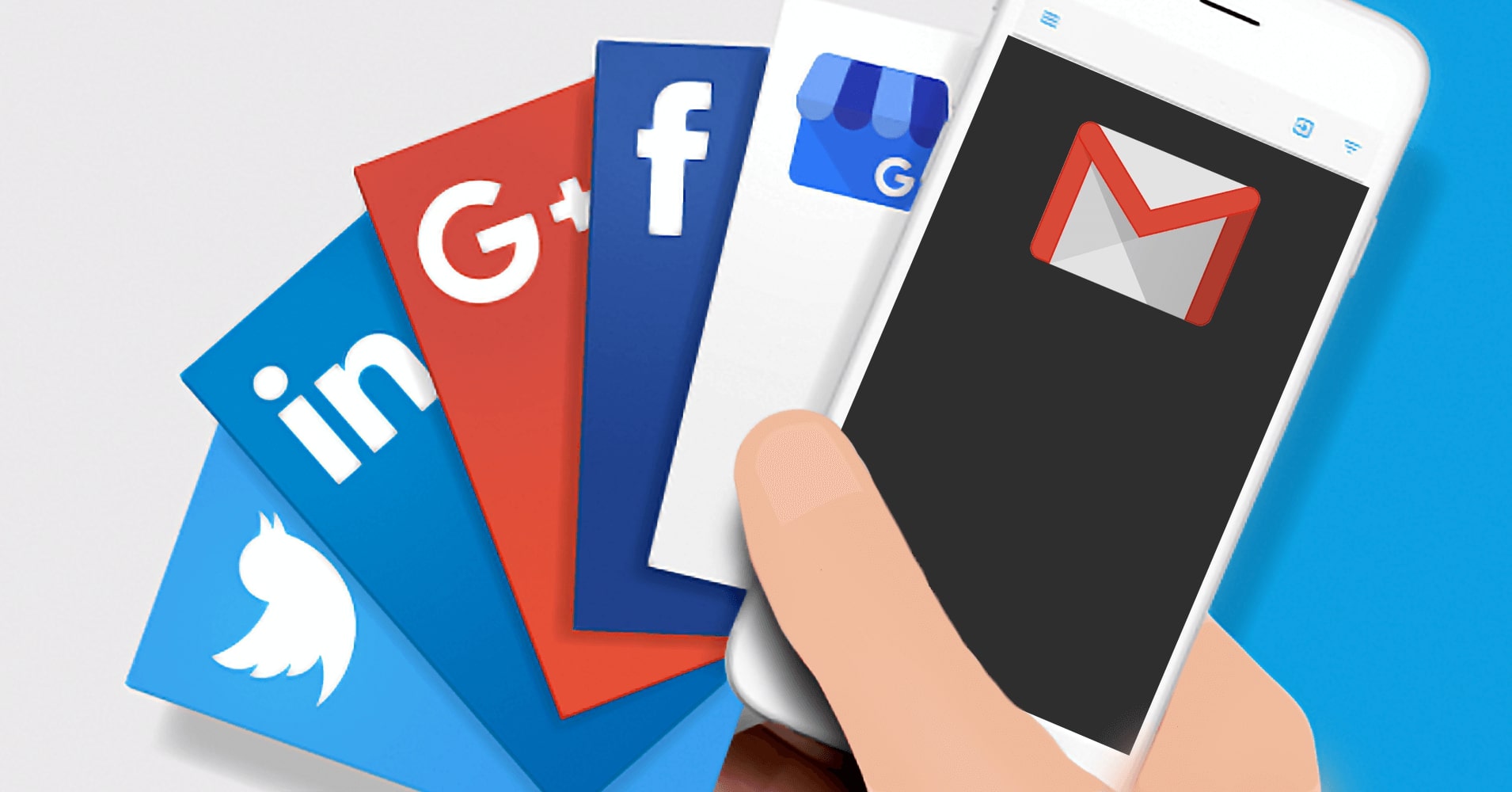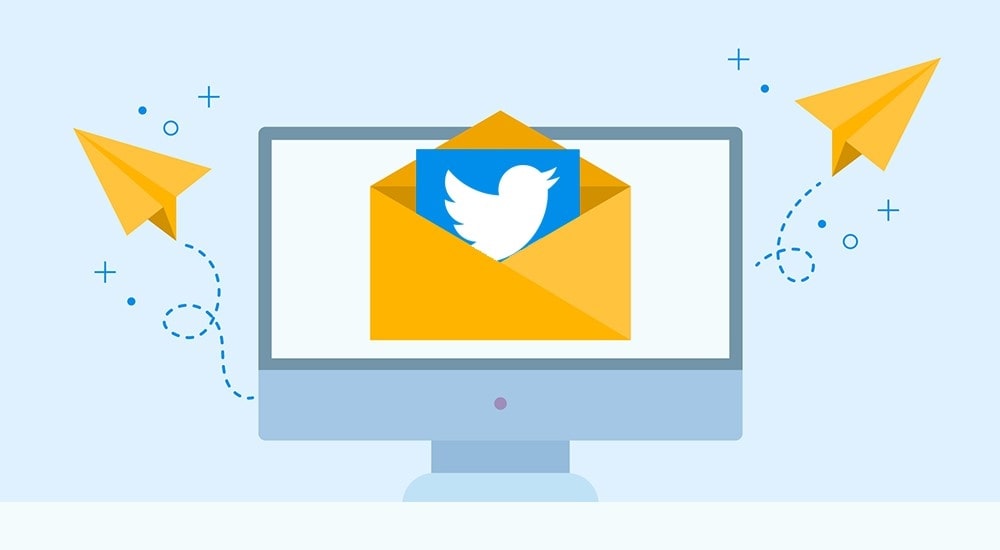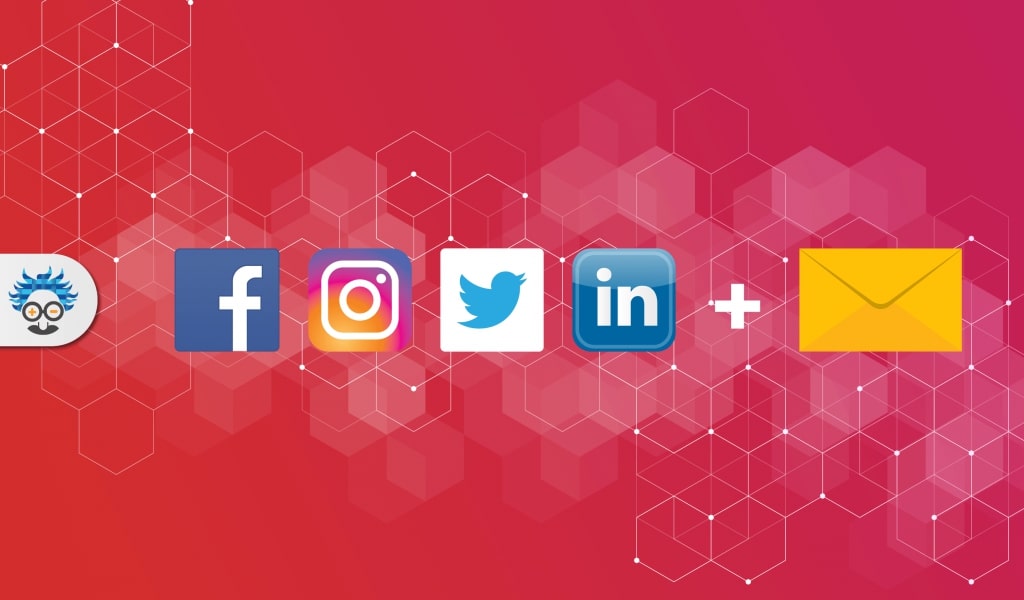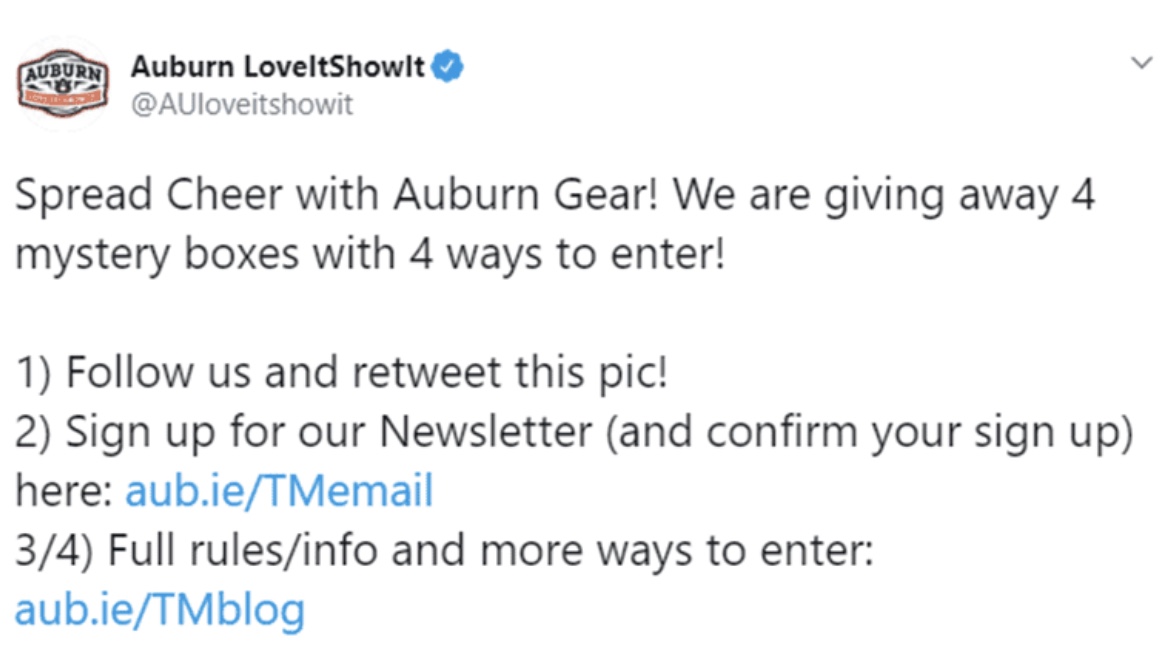Email marketing vs. Social media: Everything You Need To Know
As social media has been coming more and more popular, a lot of people claim that email marketing is falling behind. Social social is an immersive medium that has many benefits as well as a few drawbacks. Email, a tried-and-true advertising tool, has both positive and negative aspects.
Despite this, forward-thinking practitioners know that each of these approaches has their own strengths and weaknesses, and they often think of ways to combine both of these marketing strategies to get the best results. In this article, I will share with you everything that you need to know about email marketing v.s social media, and how you can combine them to grow your business. Let’s dive in!
Is Social Media Replacing Email Marketing as many people say it does?

The simple answer is NO. Email marketing will not be phased out too soon. Despite the predictions of email doom and gloom, it will be around for a long time. Here’re some of the reasons why, considering social media’s immense power and scope, email marketing is here to stay: Return on Investment (ROI).
When comparing the ROI obtained from social media versus email marketing, email marketing emerges as the strong winner. This is why.
Facts about email marketing:
- 3.8 billion email users
- The average conversion rate is about 6%
- 60% of people prefer to receive promotions via email
- The average open rate is about 22.8%
- The average click-through rate is 3.7%
- The average ROI is 4,400%
For a fair comparison, here are the corresponding figures about social media:
Social media marketing facts:
- 3.4 billion users
- 20% of people prefer to receive promotions and deals via their social media platform of choice
- The average conversion rate is about 1.9%.
- The average ROI is truly unknown.
Let’s not just stop here but dive deep into many aspects of how email marketing and social media compares with one another in many different aspects of marketing.
Email marketing v.s Social Media: Pros and Cons
1. Email Marketing
Pros
Wider Reachability
Email marketing is among the most cost-effective methods for targeting and reaching out to a broad number of people. Email reaches, on average, 79% of the people who are targeted. People check their email more often than they do social media. In reality, more than half of internet users check their email first thing in the morning before visiting any social media channel.
High Click Rate
According to research, an email marketing campaign can generate 5–100 times the click-through rates of Facebook and Twitter. Again, the primary explanation is that more people use email than social media. In addition, I check my emails once a day. The amount of likes/comments on social media could be less than the number of clicks on an email marketing campaign.
Higher chances of conversion
Email is the most effective way to increase conversions, especially for a startup. You can effectively cultivate prospects by sending customized triggered automated emails based on their past actions. The explanation for this is the ability to segment the list and send personalized emails.
Better ROI
According to a study conducted by the DMA and Demand Metric, the average ROI for email marketing is 122 percent, which is four times higher than the ROI for other marketing formats. Email marketing is 59 percent more successful in terms of ROI. Email marketing generates 30 times more leads than any other channel.
Cons
Slower to start than other platforms
We’re all aware that constructing our own subscriber list is preferable to buying or using someone else’s list. It takes a long time to compile a relevant list. Getting subscribers on your list can be a time-consuming operation, and as a result, the introduction of email marketing can be postponed, say until you have a sufficient number of subscribers.
Spam rates
Spam, or failing to put the email in the inbox, is one of the most common yet most serious disadvantages/hurdles in email marketing. When composing an email, one must exercise extreme caution; otherwise, the email will be identified as spam.
2. Social Media
Pros
Higher Engagement
Almost all marketers accepted that social media has a higher rate of interaction. This is because social media sites have a great environment to make things go viral, resulting in higher user engagement than email marketing. If you want to make something go viral or build a buzz, social media is the best place to do it.
Shareability
In terms of sharing/shareability, social media outperforms email marketing. Facebook accounted for 57% of global content sharing activities, while Twitter accounted for 18% and email accounted for 4%. Social media is for mass distribution.
Higher frequency
You can engage with your audience on a social media site several times per day without bothering them. However, you cannot do the same in email marketing. Assume you start receiving email 5-6 times a day. How long do you think it’ll take you to click the “unsubscribe” button?
Cons
Reliability issue
There is so much said and claimed on social media that it is difficult to trust and decide which is real and which is not. It is extremely difficult to put your faith in a new brand or a new startup.
Difficult to track multiple channels
Managing many different social media accounts can be a daunting job, especially when you need to be active on every channel. It can get all even more challenging for small businesses.
Social Media vs. Email: User Preferences

What is the first thing most people do when they wake up in the morning? 58 percent of those polled said they check their emails. Let that sink in for a moment. What’s more, people who check their emails first thing in the morning are said to be more task-oriented online than those who check their social media sites.
When task-oriented people browse the internet, they usually have a specific purpose in mind, such as checking out promotions, searching for product details, or looking for the best offers. Don’t worry, social media fans; once they’ve done checking their emails, they’ll switch to their preferred social media site.
Here’s one main distinction to keep in mind when deciding between social media and email. People use their preferred social media sites to be amused, while their email accounts are used to be updated.
Here’s something else you might not be aware of. 60% of people who sign up to receive emails from a company or brand anticipate receiving promotional emails. People who follow businesses or brands on social media aren’t exactly asking them to slip into their direct messages with promotions.
I know this because I look forward to receiving emails from Amazon to inform me of product sales. But I’m not looking forward to being sold on Facebook.
Where Do Consumers Go to Find Discounts and Deals?
According to 44 percent of consumers, it’s their email. Just about 4% said they used Facebook to find a deal. This demonstrates that you should not be afraid to send promotional emails to your contacts because they are absolutely cool with receiving them.
Purchasing Habits
Sixty percent of customers said they made a purchase as a result of a marketing message they got in an email. Just 12.5 percent, on the other hand, said they were considering buying because of a buy now button on a social media website. Do not mistake this low figure for a fear of making an online purchase; after all, more than 90% of the world’s online users are willing to make online purchases.
Worse, only about half of all internet users worldwide trust social media when performing product research. This is not what you want to hear if you rely on social media to sell your goods. But don’t despair, there is always a space for social media marketing thanks to all the advantages it can bring about that was mentioned in the previous section.
Can you combine social media and email marketing?

Social media marketing is excellent for reaching out to new people. Email marketing is fantastic at converting them. You are right if you see an opportunity here. Customers need to come into contact with a brand up to 12 times before making a buying decision. Companies that mix email with social media marketing will reach that milestone faster.
In the meantime, they increase customer satisfaction, interaction, and brand awareness. Isn’t it amazing? What’s more, it’s easy to make them work together in a cost-effective manner. Here are a few pointers to get you started.
9 tips to combine social media and email marketing

1. Mix email with social media to grow a stronger brand
Potential consumers are looking for brand honesty. It means that the organization is dependable and pays close attention to detail. So, what happens when your email marketing and social media marketing strategies don’t align with one another? Email and social media begin to communicate in very different languages.
Your brand’s consistency suffers as a result. Your emails are lighthearted and casual. The Facebook page, on the other hand, is all business. As a consequence, the overall branding suffers, and you lose potential customers.
However, synchronizing the language of your emails and social media marketing is easy. It all comes down to team coordination. And, if done correctly, this strategy will assist you in developing more successful branding.
2. Use email marketing to do tests before running social media ads
Social media ads can be an effective way to convert potential customers. They are, however, not cheap. Wouldn’t it be great to know which call-to-action will result in the most conversions? Use email marketing to test ad concepts before running them.
Write several versions of an email, for example, using powerful subject line techniques. See - one works well – and use it in social media advertisements. You can take it a step further by A/B testing different subject lines and photos depending on the consumer community you want to address.
3. Recycle content
It is relatively simple to reuse content through email and social media marketing platforms. It all boils down to getting a structure in place, i.e. teams interacting with one another. The obvious benefit here is the ability to share assets between teams. It’s a fantastic and low-cost approach.
Take, for example, the efficiency app Notion. They usually use a lot of GIFs on their Twitter page to show off new features before they are published. However, once the update is released, the team repackages the same GIFs and use them in an email update:

The strategy also operates in the opposite direction. Tell a detailed story in an email update and then reuse it on Twitter or Facebook. Content sharing allows marketers to keep their pipelines complete while also improving brand quality.
4. Add links to your social media account in your email updates
This one is self-evident. Remember to include links to related social media sites in your email updates! This will make subscribing to your mail list a simple one-click operation.
Consider a customer who joins your email list. If they like it, they may want to look at your social media accounts. However, if you do not have the links open, most people would not bother looking for them on their own. This is remedied by including links in your email.
Airtable sends email updates with no mention of their (quite popular) social media accounts. They don’t have an opportunity to communicate after their subscribers read an email:

TunnelBear’s email looks almost similar. But they add links to Twitter and Facebook in the footer, making it very easy to check them out.

5. Schedule new posts on social media to remind people about your email list
It’s also a good idea to remind followers of your social media accounts about your email list. To begin, you can schedule posts that include a link to your email list landing page. Explain what the user can gain from it and why your email list is useful. Intercom, for example, enjoys using custom photos in their tweets:

It is well worth it to include a link in your Instagram profile. Stories can also be used to promote the email list. Users will be able to access your landing page by simply swiping up. In certain cases, it is preferable to use built-in tools for such promotions (such as Facebook’s call-to-action buttons).
Product Hunt is a perfect example of an easy way to promote a company email list. Each edition of their newsletter is published online and then shared on social media:

Until subscribing, their followers will see what kind of material they can see in an inbox. If they want to sign up, the sign-up form is right there.
Take note that the released newsletter prominently displays Twitter and Facebook sharing buttons. Once again, the distinctions between email and social media marketing are blurred.
6. Run contests
Contests are a fun way to interact with your social media followers. Of course, you should do it in a way that also contributes to the growth of your email list. Create a call to action and a reward first. Then what? Request that those who wish to participate sign up for your newsletter!

Now a portion of your social media community is also on your email list. A similar concept would be to capitalize on people’s FOMO. Encourage people to sign up for an incoming email newsletter that includes unique sales and discounts. Alternatively, note in the next email that you’re running a Twitter contest.
7. Take advantage of social media email digests
Here’s a smart way to get into a customer’s email inbox without forcing them to sign up. Basically, join common LinkedIn groups and start participating. Many people sign up for email alerts from brands they are interested in. If you are effective in publishing great content, a potential customer will receive an update in their inbox. Of course, the key here is to create excellent content. However, you should be able to do it fairly easily by reusing blog posts.

For example, I’ve never heard of Tubik Studio. However, I am a subscriber to the Medium Weekly Digest. Tubik’s marketers were very involved in the UX Planet community, so their article was featured in one of the digests.
8. Use social media to attract ideal customers subscribe
If you want to get specific people to opt in for your email list, social media (particularly LinkedIn) can be useful. In LinkedIn Sales Navigator, for example, enter your ideal customer profile. The tool will immediately create a list of hundreds of people who are well suited to be your customers.
After that, you can direct your efforts into contacting them and convincing them to sign up. You should probably offer some kind of bonus, such as an ebook in exchange for subscribing. Pay attention to analysis, create a customized newsletter, and you’ll be able to expand your email list of the most committed customers.
9. Upload your email list to social media
You can also add people who have already subscribed to your email list to your social media list. Upload your email list to Twitter (Tailored Audiences), Facebook (Custom Audiences), or LinkedIn (Matched Audiences). This way, you’ll be able to conveniently tailor your advertising depending on whether consumers have already experienced your brand or not.
Final words
That’s it! I hope that this article has provided you with valuable information about how email marketing and social media marketing are different from one another, and how you can combine them to maximize your marketing efforts. Please feel free to leave comments below for further discussion on this topic!
New Posts

How To Set Up Google Analytics 4 For Your BigCommerce Store






